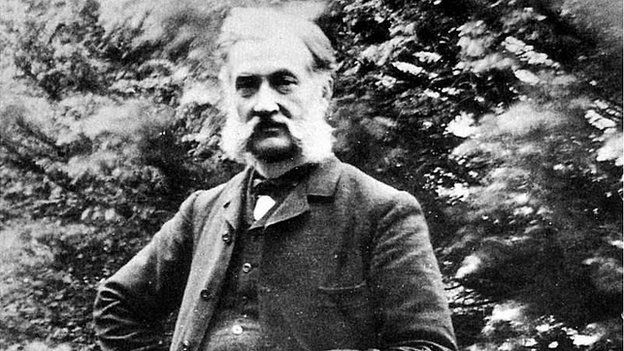306-The Inventor Who Disappeared
Futility Closet
Greg Ross
4.8 • 748 Ratings
🗓️ 3 August 2020
⏱️ 32 minutes
🧾️ Download transcript
Summary

In 1890, French inventor Louis Le Prince vanished just as he was preparing to debut his early motion pictures. He was never seen again. In this week's episode of the Futility Closet podcast we'll consider the possible causes of Le Prince's disappearance and his place in the history of cinema.
We'll also reflect on a murderous lawyer and puzzle over the vagaries of snake milking.
Intro:
In 1826, schoolteacher George Pocock proposed a carriage drawn by kites.
George Sicherman discovered an alternate pair of six-sided dice that produce the same probability distribution as ordinary dice.
Sources for our feature on Louis Le Prince:
Christopher Rawlence, The Missing Reel: The Untold Story of the Lost Inventor of Moving Pictures, 1990.
Thomas Deane Tucker, The Peripatetic Frame, 2020.
Adam Hart-Davis, ed., Engineers: From the Great Pyramids to the Pioneers of Space Travel, 2012.
Jenni Davis, Lost Bodies, 2017.
Charles Musser, "When Did Cinema Become Cinema?: Technology, History, and the Moving Pictures," in Santiago Hidalgo, ed., Technology and Film Scholarship: Experience, Study, Theory, 2018.
Richard Howells, "Louis Le Prince: The Body of Evidence," Screen 47:2 (Summer 2006), 179–200.
John Gianvito, "Remembrance of Films Lost," Film Quarterly 53:2 (1999), 39-42.
Irfan Shah, "Man With a Movie Camera," History Today 69:1 (January 2019) 18-20.
Violeta María Martínez Alcañiz, "The Birth of Motion Pictures: Piracy, Patent Disputes and Other Anecdotes in the Race for Inventing Cinema," III Congreso Internacional Historia, Arte y Literatura en el Cine en Español y Portugués, 2015.
Atreyee Gupta, "The Disappearance of Louis Le Prince," Materials Today 11:7-8 (July-August 2008), 56.
Justin McKinney, "From Ephemera to Art: The Birth of Film Preservation and the Museum of Modern Art Film Library," Art Documentation: Journal of the Art Libraries Society of North America 33:2 (September 2014), 295-312.
Denis Pellerin, "The Quest for Stereoscopic Movement: Was the First Film Ever in 3-D?", International Journal on Stereo & Immersive Media 1:1 (2017).
Ian Youngs, "Louis Le Prince, Who Shot the World's First Film in Leeds," BBC News, June 23, 2015.
Kevin Brownlow, "The Inventor Vanishes," New York Times, Nov. 18, 1990.
"How Is the Technology That Was Used to Reconstruct the Oldest Film in History?", CE Noticias Financieras, English ed., May 13, 2020.
Chris Bond, "Leeds Celebrates Its Film Pioneer," Yorkshire Post, Oct. 24, 2017.
Adrian Lee, "Whatever Happened to the True Father of Film?", [London] Daily Express, June 29, 2015.
"Louis Le Prince: Time to Honour Cinema's Forgotten Pioneer," Yorkshire Post, Sept. 16, 2013.
Troy Lennon, "Movie Pioneer Caught in a Disappearing Act," [Surry Hills, N.S.W.] Daily Telegraph, Oct. 14, 2008, 38.
Kieron Casey, "The Mystery of Louis Le Prince, the Father of Cinematography," Science+Media Museum, Aug. 29, 2013.
Listener mail:
Agnes Rogers, How Come? A Book of Riddles, 1953.
Wikipedia, "Lateral Thinking" (accessed July 25, 2020).
Wikipedia, "Situation Puzzle" (accessed July 25, 2020).
Paul Sloane, Lateral Thinking Puzzlers, 1991.
This week's lateral thinking puzzle was contributed by listener Eric Ridenour.
You can listen using the player above, download this episode directly, or subscribe on Google Podcasts, on Apple Podcasts, or via the RSS feed at https://futilitycloset.libsyn.com/rss.
Please consider becoming a patron of Futility Closet -- you can choose the amount you want to pledge, and we've set up some rewards to help thank you for your support. You can also make a one-time donation on the Support Us page of the Futility Closet website.
Many thanks to Doug Ross for the music in this episode.
If you have any questions or comments you can reach us at [email protected]. Thanks for listening!
Transcript
Click on a timestamp to play from that location
| 0:00.0 | Welcome to the Futility Closet Podcast, forgotten stories from the pages of history. |
| 0:15.1 | Visit us online to sample more than 11,000 quirky curiosities from a kite-drawn buggy to alternative dice. |
| 0:22.4 | This is episode 306. |
| 0:24.2 | I'm Greg Ross. |
| 0:25.2 | And I'm Sharon Ross. |
| 0:26.9 | In 1890, French inventor Louis Le Prans vanished just as he was preparing to debut his early |
| 0:32.6 | motion pictures. |
| 0:33.8 | He was never seen again. |
| 0:35.8 | In today's show, we'll consider the possible causes of Le Prons' disappearance |
| 0:39.4 | and his place in the history of cinema. |
| 0:42.2 | We'll also reflect on a murderous lawyer |
| 0:44.3 | and puzzle over the vagaries of snake milking. |
| 0:53.6 | In 1888, the French inventor Louis Le Prance shot a brief glimpse of his family milling about in the garden of his father-in-law's house in Rounday Leeds in the north of England. |
| 1:04.6 | The footage consists of only 20 frames and lasts less than two seconds. |
| 1:08.7 | The scene is both utterly mundane and vitally important. It might be the |
| 1:12.4 | oldest surviving film in existence. I say might be because the early history of film is famously contested. |
| 1:18.9 | Between 1880 and 1900, many people were struggling on both sides of the Atlantic to create moving |
| 1:24.2 | pictures. Even today, Americans tend to uphold the achievements of Thomas Edison |
| 1:28.2 | in bringing forth the new medium, while the French point to the Lumiere brothers. Le Prans may have |
| 1:33.3 | produced moving pictures before either of these claimants, but he never got to show them outside his |
| 1:37.5 | workshop. In September 1890, just before he was due to exhibit his films in public for the first |
| 1:42.8 | time, he boarded a train |
... |
Please login to see the full transcript.
Disclaimer: The podcast and artwork embedded on this page are from Greg Ross, and are the property of its owner and not affiliated with or endorsed by Tapesearch.
Generated transcripts are the property of Greg Ross and are distributed freely under the Fair Use doctrine. Transcripts generated by Tapesearch are not guaranteed to be accurate.
Copyright © Tapesearch 2025.

